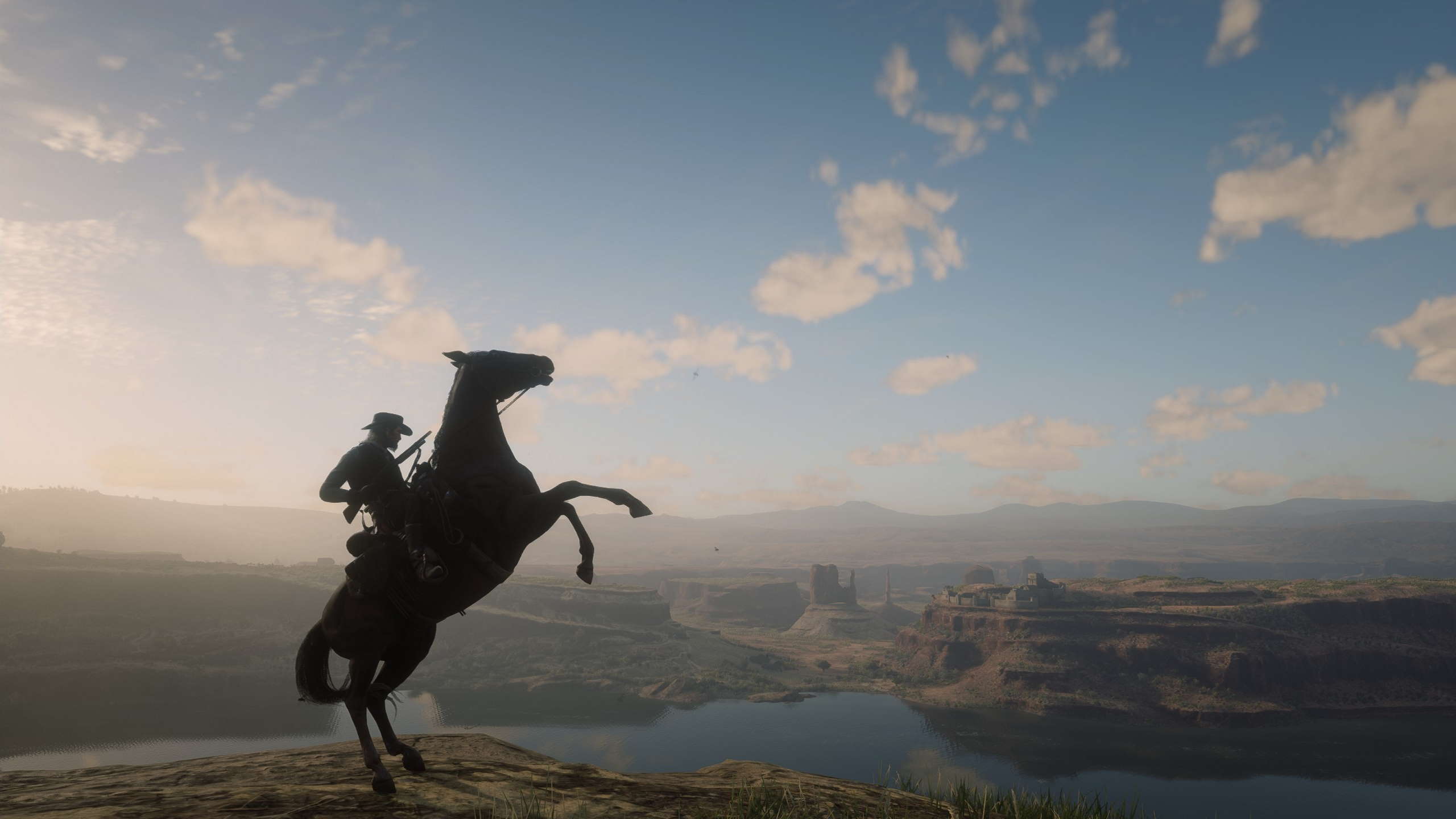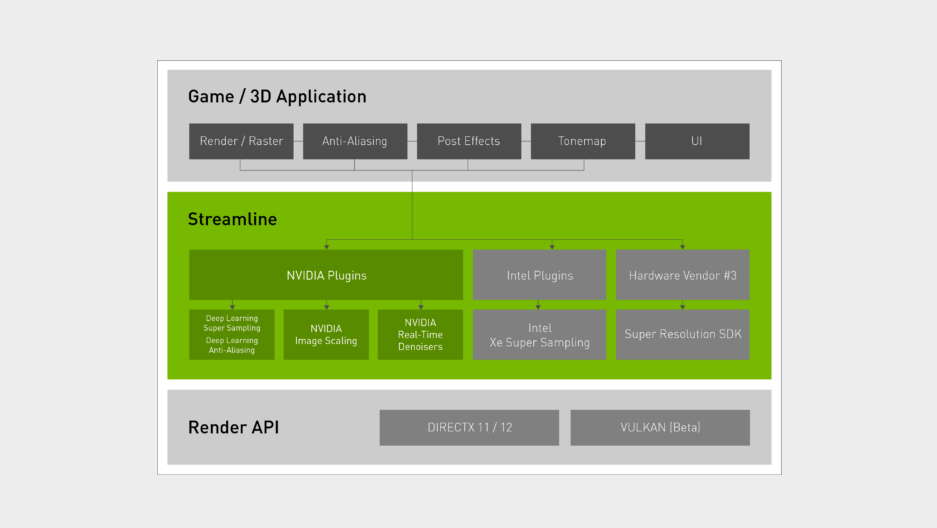Has Nvidia just become the good guy in the whole DLSS vs FSR vs XeSS debate?
Nvidia's open-source approach to making it easier for devs to implement rivals' super sampling tech is laudable.

Nvidia has introduced an open-source framework to make it easier for developers to plug anyone's upscaling algorithm into the rendering pipelines of their games. Intel's on board, and AMD's FSR 2.0 looks like a prime candidate, too. None of which seems like something I would have expected to be writing today. Or ever really.
Historically, Nvidia has not exactly been known as the open-source champion. Team green has generally been very much into the proprietary schtick for its developer-facing features, often requiring devs to sign up to use particular graphical goodies. Whether by design or no, that would potentially lead to the exclusion of other manufacturers' competing tech, often purely by virtue of the fact that dev time is limited, and expensive, and sometimes you've just got to pick a side and stick to it to get a game out in time.
With Nvidia Streamline, however, developers no longer have to figure out a way to manually plumb every different upscaling SDK into their game. This has the combined benefits of shortening the amount of time it takes to add different solutions and providing more opportunities for both manufacturers and gamers to access those features.
Streamline has been designed as more or less a plug-and-play framework that exists in between the game itself and the final render API, be that DirectX or Vulkan. Yes, we're even talking about it working with Vulkan, though that is in beta at the moment. Interestingly Streamline isn't restricted to DirectX 12, either, as Nvidia knows the benefits of super sampling beyond ray tracing and is making the framework functional for DirectX 11 games, too.
The open-source nature of Streamline, now released in its entirety on Github, means that hardware manufacturers can create their own plug-ins for the framework. Intel has already made its own plugin for XeSS, so games will be ready once the Arc Alchemist GPUs finally are, and that means AMD can get in on the action as well.
At the moment, however, AMD's FidelityFX Super Resolution (FSR) comes into play after the standard render pipeline, and so probably isn't a good fit to run with Streamline. But FSR 2.0 is a different beast—now a temporal-based version, like DLSS and XeSS—and will actually come into the graphics pipeline. Which should also make it even easier to implement for developers.

Best gaming monitor: Pixel-perfect panels for your PC
Best high refresh rate monitor: Screaming quick screens
Best 4K monitor for gaming: When only high-res will do
Best 4K TV for gaming: Big-screen 4K PC gaming
Already AMD reckons devs will be able to implement FSR 2.0 in less than three days if they've already got their game up and running with DLSS 2.0. But if it's simply a matter of adding another plug-in to Streamline that would be even quicker.
Keep up to date with the most important stories and the best deals, as picked by the PC Gamer team.
By providing a standard, open-source way for companies to easily get their super sampling shinies in front of more gamers, Nvidia is actually opening up choice for players, and not purely looking at locking them into the GeForce way of the world. Which seems counter to the common narrative levelled at the green team.
Anything that enables us to get more super sampling techniques into our games gets a big tick from me. I don't want anyone to be in a situation where they've got one company's card and are excluded from a free performance boost simply because they chose the 'wrong' manufacturer for that game. And this looks like another step towards eradicating that possibility.
So long as AMD signs up, I guess. It's open-source though, so it's going to need a very good reason not to. We've asked AMD whether it's considering a plug-in and will update when we hear back.

Dave has been gaming since the days of Zaxxon and Lady Bug on the Colecovision, and code books for the Commodore Vic 20 (Death Race 2000!). He built his first gaming PC at the tender age of 16, and finally finished bug-fixing the Cyrix-based system around a year later. When he dropped it out of the window. He first started writing for Official PlayStation Magazine and Xbox World many decades ago, then moved onto PC Format full-time, then PC Gamer, TechRadar, and T3 among others. Now he's back, writing about the nightmarish graphics card market, CPUs with more cores than sense, gaming laptops hotter than the sun, and SSDs more capacious than a Cybertruck.


